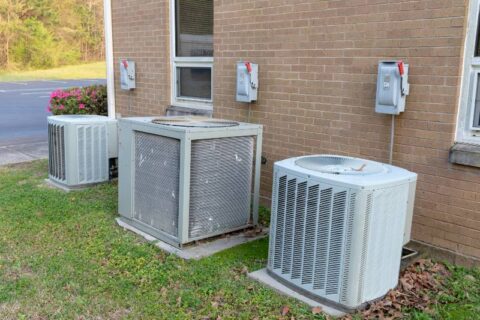7 Types of Home Heating Systems
Whether you’re building a new home or looking to replace your aging heating system, you may be interested to learn that there are seven main types of heating systems. Learn a little about each one to help you decide if you should simply upgrade to a newer version of your existing system or try installing something entirely new.
- Furnaces are the most common home heating system type in the US. They are usually paired with central air conditioners to ensure whole-home comfort in the summer. Furnaces are considered forced-air systems because they circulate heated air to each room via a network of air ducts. They can run on natural gas, oil, propane, or electricity.
- Boilers deliver hot water or steam to radiators, baseboard heaters, or in-floor radiant heating systems. Gas and oil are the most common fuel options because electric boilers cost more to operate. Boilers can be combined with ductless mini-splits or window air conditioners if your home doesn’t have ductwork.
- Heat pumps are growing in popularity as a home heating option. They use electricity to move heat, which is more efficient than electric resistance heating. Thanks to a built-in reversing vale, heat pumps function as efficient central air conditioners in the summer, allowing you to install a single piece of HVAC equipment for year-round comfort.
- Hybrid heating systems, also known as dual-fuel heating, involve installing both a furnace and a heat pump. The heat pump keeps your home comfortable in mild weather, ensuring the lowest heating bills possible. Then, the gas-fired furnace acts as a supplemental heat source when the temperature drops below freezing.
- Ductless mini-splits are a type of heat pump, so they provide both heating and cooling. The difference is that mini-splits mount to the wall with a built-in air handler, eliminating the need for ductwork. Multiple indoor units can connect to a single outdoor unit for whole-home comfort.
- Radiant heating warms your home from the ground up with electric, hydronic, or air-heated tubes installed under the floor. Wall and ceiling panels are also available. Many people prefer this type of heating because it warms you and everything in the room, not just the air circulating above your head.
- Electric resistance heaters are uncommon for whole-home heating because they incur high electric costs. However, they are popular for supplementing the heat in sunrooms, home additions, and finished basements. Electric resistance heaters are affordable to purchase, easy to set up, and rarely require maintenance.
Parley’s PPM Plumbing, Heating & Cooling opened its doors in 1979, beginning a tradition of unparalleled customer service and quality HVAC repairs and installation. We’re dedicated to your satisfaction and strive to do it right the first time. No matter what home heating system you have, we can service or upgrade it to keep your family comfortable all winter long. Call us at 801-226-3033 for Utah County residents or 801-229-2665 if you live in Draper or Sandy. You can also contact us online with any questions you have.


